Animal movement technologies have already significantly advanced our understanding of the natural world, from uncovering previously mysterious migration patterns and key movement corridors to demonstrating the impacts of anthropogenic pressures and climate change. Continuing advances in the development of technologies for collecting and transmitting bio-logging data, combined with the increased availability of high-resolution environmental data and analytical developments in movement modelling, are opening doors to novel applications. However, there are still major gaps in the space, including mobilizing movement data to translate data from tracking devices into insights for application in policy and practice. This group is a place for the animal movement community to connect and discuss our efforts to advance the field.
Resources for beginners
Learn about WILDLABS Animal Movement research projects
- MoveBON Initiative Announcement
- MoveBON Follow-Up Discussion
- Virtual Meetup Season 4: Tracking Progress (A WILDLABS research project on movement ecology)
Group curators
- @TaliaSpeaker
- | She/her
WILDLABS & World Wide Fund for Nature/ World Wildlife Fund (WWF)
I'm the Executive Manager of WILDLABS at WWF



- 23 Resources
- 64 Discussions
- 31 Groups
- @lhughey
- | she/her
Smithsonian Conservation Biology Institute
I am an ecologist and program manager with experience leading collaborative research projects in international settings. I specialize in the application of animal tracking data to conserve migratory species on a changing planet.



- 6 Resources
- 10 Discussions
- 3 Groups
No showcases have been added to this group yet.
Natural Solutions
Computational ecologist - Engineer at Natural Solutions (France)



- 0 Resources
- 1 Discussions
- 13 Groups
- @Gcharron
- | Mr.
Cofounder of Outreach Robotics, I have a master in mechanical engineering and I thrive on developing new technology for field scientists using remote controlled robots.


- 1 Resources
- 15 Discussions
- 4 Groups
- @UrsusAmer66
- | He/Him
Research Ecologist focused on human disturbance and ecophysiology
- 0 Resources
- 0 Discussions
- 5 Groups
Noé
Hi! I am Aurélie, a dedicated French ornithologist and engineer specialized in conservation technologies. I am currently Program manager for the biodiversity of natural habitats' program in a French NGO called Noé.

- 0 Resources
- 1 Discussions
- 5 Groups
Ol Pejeta Conservancy
Endeavoring to implement tech solutions for conservation.



- 0 Resources
- 18 Discussions
- 11 Groups
Wildlife Drones
Wildlife Drones has developed the world’s most innovative radio animal-tracking system using drones so you can track your radio-tagged animals like never before.


- 18 Resources
- 8 Discussions
- 31 Groups
- @AndreaHerguedas
- | She/her
PhD student ~ acoustic stress response and behavior of sea turtle juveniles
- 0 Resources
- 0 Discussions
- 4 Groups
- @woodcreeper
- | he/him/his
US-Based (Cape May, New Jersey) Conservation Biologist, Migration Junkie, lover of maps and GIS, Licensed Bird Bander, Birder, Father, Husband. Also working with my best friends making wildlife telemetry devices!
- 0 Resources
- 0 Discussions
- 1 Groups
KORA
- 0 Resources
- 0 Discussions
- 2 Groups
- 0 Resources
- 0 Discussions
- 9 Groups
- 0 Resources
- 0 Discussions
- 10 Groups
- @emilyhuston
- | she/her/hers
Hi! I am currently pursuing a masters degree in wildlife conservation and management, and I am looking to gain more information and form connections with people who are interested in all the same things :)
- 0 Resources
- 0 Discussions
- 6 Groups
What is it like to track endangered species using drones? In this blog post from Wildlife Drones, Dr. Debbie Saunders travels to New Zealand to track the Kākāpō, an extemely rare and elusive bird of which approximately...
8 July 2020
In this three-part WILDLABS feature article series, we take a look at the various technologies used to fight the greatest threat to wild condors, lead poisoning, explore the innovations changing the ways we study and...
2 July 2020
Article
SMART is excited to showcase the features of their new data collection solution, SMART Mobile! Built around the specific needs of the SMART user community, this streamlined mobile tool allows staff in protected areas to...
23 June 2020
Our friends at the Conservation Leadership Programme are pleased to announce the winners of their 2020 CLP Team Award! Today, they'd like to feature some of the inspiring teams and projects that have earned this honor,...
8 June 2020
Conservation technology largely consists of two categories: tools to monitor and study wildlife and their habitats, and solutions to mitigate or prevent negative human impacts. The fight against poaching in particular...
4 June 2020
A couple months ago, we introduced you to the Footprint Identification Technique (FIT), a non-invasive way to build an identification algorithm from both wild and captive animals by photographing footprints. Today, we'...
3 June 2020
Article
We're excited to welcome the WildTrack FIT group to our community! Today, we'd like to introduce you to the Footprint Identification Technique (FIT) and share how you can incorporate this tracking method into your field...
6 May 2020
In this three-part WILDLABS feature article, we'll take a look at the various technologies used to fight the greatest threat to endangered condors, explore the innovations that may change the way we study and understand...
5 May 2020
Article
How does tracking technology meet the many challenges specific to monitoring birds within their home ranges and over long distances during migration? WILDLABS community member Virginie Perilhon from Xerius Tracking...
23 April 2020
Article
At the 2018 London Illegal Wildlife Trade Conference, we announced the WILDLABS Tech Hub, an accelerator programme created to support the development and scaling of groundbreaking technological solutions addressing the ...
13 April 2020
Community Announcement
Our second WILDLABS Community Call took place on April 1st to continue the discussion started by Ben Tregenna in our Data Science group, in which he suggested the idea of submitting a collaborative entry to the X-Prize...
30 March 2020
Trapped inside during the COVID-19 quarantine and looking to engage with conservation science without leaving your desk? Citizen science projects like those on Zooniverse offer a great opportunity to impact scientific...
18 March 2020
August 2025
event
September 2025
event
event
October 2025
event
November 2025
event
November 2023
event
100 Products
Recently updated products
| Description | Activity | Replies | Groups | Updated |
|---|---|---|---|---|
| Hi everyone,I want to use this platform to spread the word about AfriMove, a collaborative initiative to share movement data collected from... |
|
Animal Movement | 5 months 1 week ago | |
| The application deadline for the AniMove Workshop 2025 in Costa Rica is the 31st of May 2025. Hurry and sign up here |
|
Animal Movement, Conservation Tech Training and Education, Data management and processing tools, Geospatial, Software Development | 2 months 3 weeks ago | |
| Hi Vivian,Thank you so much for your reply! I appreciate the pointers on species mixing, to clarify: I have been experimenting with deer data, but for once the project is underway... |
|
Animal Movement | 2 months 3 weeks ago | |
| Hi Ethan, It's indeed a competitive area. My advice for you (and anybody else seeking a PhD supervisor)...Do background research on each individual potential supervisor and always... |
|
Early Career, AI for Conservation, Animal Movement, Climate Change | 2 months 4 weeks ago | |
| We are please to inform that we have implemented the point 1 and 4 and with this have finalized the project. The latest improvements:Improvement in findability of help... |
|
Animal Movement, Data management and processing tools, Software Development | 3 months ago | |
| Hello everyone!My collaborators and I are trying to assess the extent to which animal movement ecology is currently being integrated into... |
|
Animal Movement | 3 months ago | |
| My name is Frank Short and I am a PhD Candidate at Boston University in Biological Anthropology. I am currently doing fieldwork in Indonesia using machine-learning powered passive... |
|
Acoustics, AI for Conservation, Animal Movement, Data management and processing tools, Early Career, Emerging Tech, Ethics of Conservation Tech, Protected Area Management Tools, Software Development | 3 months 1 week ago | |
| Thanks Phil - I have e-mailed you.Peter |
|
Animal Movement, Sensors | 3 months 2 weeks ago | |
| Hi, we've gotten more than 20 replies until now so thank you if you took the time to answer.And we would really appreciate if you could spare a few minutes to answer if you haven'... |
|
Emerging Tech, Animal Movement, Build Your Own Data Logger Community | 4 months ago | |
| Reopenning this discussion again in case there is some news! |
+25
|
Animal Movement | 4 months 2 weeks ago | |
| Good morning JocelynThank you very much for your comment, this is proving to be very useful advice and thank you so much for setting me on the right path!! This is very exciting!!... |
|
Animal Movement, Citizen Science, Human-Wildlife Coexistence, Marine Conservation, Drones, Community Base, Geospatial | 4 months 3 weeks ago | |
| Hi Nikita, If you haven't already, I'd recommend reaching out to the folks at the Cornell Ornithology lab. They're really glued into all things bird. In particular, I... |
|
Animal Movement, Drones, Emerging Tech, Human-Wildlife Coexistence | 4 months 3 weeks ago |
WILDLABS Tech Hub: WWF PandaSat
13 April 2020 12:00am
WILDLABS Community Call Recording: Rainforest X-PRIZE
30 March 2020 12:00am
Online Workshop: Conservation Technology
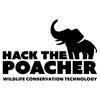 Hack the Poacher
Hack the Poacher
23 March 2020 12:00am
Enter the Zooniverse: Try Citizen Science for Yourself!
18 March 2020 12:00am
OpenCollar Update 1
6 March 2019 12:05pm
19 April 2019 7:55am
also, we noticed our BoM was missing from GitHub, so we've added it now: https://github.com/Wild-Spy/OpenDrop/blob/master/Documentation/OpenDrop_BOM.xls
5 March 2020 4:44am
the drop off paper
https://besjournals.onlinelibrary.wiley.com/doi/10.1111/2041-210X.13231
#Tech4Wildlife 2020 Photo Challenge In Review
4 March 2020 12:00am
Accepting Applications: ArcGIS Solutions for Protected Area Management
4 March 2020 12:00am
Call for Nominations: Tusk Conservation Awards
3 March 2020 12:00am
Open-Source Argos Developer's Kit / Tag
2 March 2020 10:27pm
Hawai'i Conservation Conference
 Hawaiʻi Conservation Alliance
Hawaiʻi Conservation Alliance
28 February 2020 12:00am
Animove Summer School 2020
 AniMove
AniMove
13 February 2020 12:00am
Curious about radio-tracking with drones?
29 January 2020 3:44am
31 January 2020 8:26am
Hello Laura,
Thanks for the detailed response. It sounds like a very interesting use of drone technology.
Many thanks,
Mark
12 February 2020 1:50pm
Hi,
Does your system work with normal VHF tags or do you make a custom tag for use in your system?
Does the drone have to be piloted manually in a particular path or pattern in order to acquire the tags?
Or can your receiver be placed on say a fixed-wing high speed drone programmed to fly a lawn mower pattern to cover the maximum amount of area?
I'm also curious how you are doing the direction finding, since there are no visible antennas, but I understand if you'd rather not talk about this (c:
Interesting work, thanks.
-harold
12 February 2020 9:33pm
Thanks for asking Harold,
We work with any off the shelf VHF tag, you can use tags already in the field or you can order tags from any of the manufactureres, just have to be VHF of in the case of satelite or GPS tags have a VHF componment.
The drone is piloted manually, you can see the tag locations on the base station in real time you can reposition the drone to avoid terrain challanges to get the best results.
We cover a lot of ground, I can do the math, flight patterns really come down to the application you are looking at animal being tracked ect, happy to discuss specifics further at you convenience.
We have videos of our work on out youtube channel
https://www.youtube.com/channel/UCj1pcEJHkEPCy94AlT0U7HQ
The oringinal research papers are on researchgate
https://www.researchgate.net/profile/Debbie_Saunders
You can book a virtual demo with me, I'd love to hear about your work and ideas. It would be great to give you a run through of the solution, flight patterns and user interface.
https://www.wildlifedrones.net/book-demo/
Robert
Wildlifedrones
robert@wildlifedrones.net
+61 491 625 411
Number of radio collared animals?
9 December 2019 7:27pm
4 January 2020 10:58pm
There are over 7000 tracked animals via Argos alone (monthly). More info here - http://www.argos-system.org/applications-argos/wildlife-monitoring/
5 January 2020 10:49am
Thanks Alasdair
So there are low double figure thousands just with the various services of satellite collars. Then surely high tens of thousands, maybe low hundreds of thousands with terrestrial GPS and conventional VHF.
Radio telemetry
4 June 2019 4:39pm
5 June 2019 11:33am
Hi Helen,
Two suggestions coming through over twitter:
A good start is to reduce your reciever's gain as far as possible.
Hopefully you can snuff out the antenna's rear lobe that way. Headphones really help there too. https://t.co/9Eg4gpHVly
— Faunatech Austbat (@FtechAustbat) June 5, 2019
sometimes it helps to put your body behind the antenna at about waist height. Does that make sense?
— Rob Appleby (@wildspyrob) June 4, 2019
Steph
18 December 2019 4:00am
Hi Helen, what tags are you using? Position on the animal and what species?
24 December 2019 5:07pm
HI there,
Biotrack combined Avian GPS SOB tag & PicoPip AG317 Tag on the back of Hawfinch.
H
WILDLABS Virtual Meetup Recording: Drones
9 November 2019 12:00am
Studying pangolin ecology
16 April 2019 3:59pm
21 October 2019 3:26pm
Hi all, many thanks for the information.
21 October 2019 11:42pm
Hi all,
Great to see this post continue to mature. Some good news for you all. Arribada has finished developing a lower cost open source Argos ARTIC R2 transmitter design with our development partners Icoteq for a National Geographic project. All thanks to @ThomasGray_Argos who originally gifted us 3 R2 development chips to work on an open reference design.
It's compatible with the Arribada Horizon GPS tracker, or cellular module if both are required in one device / unit. We'll look to integrate one of the LoRa radios from the Open Collar initiative too to create a comprehensive open solution that can be tweaked to form a viable pangolin tracker based on the attachment and epoxy designs above (thanks for the paper @Robin+Poches , great research).
However, first up is Bangladesh for some open ocean plastics tracking.
More info here for now - https://www.icoteq.com/icoteqs-argos-satellite-transceiver-now-certified-by-cls/
Cheers,
Alasdair
22 October 2019 3:40pm
Fantastic news, Alasdair. Indeed timely. I was wondering what the finiancial impliation for one unit will be? A price range will suffice. Thanks.
C
Wearable Tech Lions - Current Projects
17 October 2019 10:23am
18 October 2019 3:45am
Hi Natalie,
Interesting request. I may be able to help and am working in this area in Australia to track both native and introduced species. Would you please enlighten me with more specific objectives, location, duration and quantity.
Thanks.
Using Artificial Intelligence to Track Birds’ Dark-of-Night Migrations
9 October 2019 12:00am
Looking for opportunity to visit conservationists in Uganda
3 October 2019 2:19pm
Technology lab focused on wildlife protection opens on Ol Pejeta Conservancy
31 May 2019 12:00am
Technology for Wildlife and the Looming Spectre of E-Waste
3 May 2019 12:00am
9-axis sensors for tracking tiny animals
14 April 2019 12:19am
14 April 2019 7:02pm
Thanks Harold for the clarification on the accuracy of the sensor! Sounds like this isn't where it needs to be for accurate location tracking. I live just down the streen from Diginal Naturalism Labs, Andy is wonderful. Right now I have a network of 20 feeders all over our town which read implanted RFID's of visiting hummingbirds. Our thought was that maybe we could use a temporary glue to attach one of these to the back of a bird, and knowing the exact feeder location and time would allow us to calculate the amount of drift. If feeders were visited often the could be used as recallibration points to reset drift.
Anyways, thank you again for the input. Even if the location tracking aspect doesn't work, tracking the levels of activity would be super interesting! I'll probably start with that :).
14 April 2019 11:53pm
Hi jjinsing,
You could take the 9 axis LSM9DS1 sensor from the Horizon tag (open source) + firmware and build a custom module. Your limitation will be the coin cell battery and switching to a smaller microcontroller to get the size and weight down. What's the weight of the hummingbirds? 11g odd?
There is a tarantular tracking project that requires a similar sized tag (bluetooth base stations to track), so if that gets built you could inherit that in the future. Htarold is correct in that actual location will need a local rfid / base station at the feeding station to know where they are and you'd be looking at behavioural and energetics logged to flash etc.
Cheers,
Alasdair
15 April 2019 2:36am
Hi Jay, Alastair,
Small world! You've got a great resource at your doorstep then (c:
Your idea of tracking the birds between known feeding locations is a good one, and it's made use of here. But I don't know if the drift will cooperate over that long a period. A colleague who looked into cheap accelerometers for navigation told me it doesn't work after 10 seconds or so. But this was some years ago and things may have improved. It might be possible to detect when a bird is stationary, to zero the device. This is like when a fireman puts his foot down in the above case.
Thanks,
-harold
Update on Arribada's Low Cost Open Source Sea Turtle Tag
12 March 2019 12:00am
#Tech4Wildlife Photo Challenge: Our Favourites from 2019
3 March 2019 12:00am
The OpenCollar Initiative
21 February 2019 12:57pm
OpenCollar for wildlife monitoring launches at The Things Conference
6 February 2019 12:00am
Drone based orangutan tracking
12 January 2019 6:51pm
14 January 2019 11:42am
Hi Dirk,
Your case study is an interesting read, thanks for sharing. In terms of people exploring similar things, there are a few members who you could connect with about different elements of the project. Your project has a few different elements - are there specific things you're interested in hearing how others are handling?
As a start:
- @Sol+Milne is working with Drones and Orangutans, but using them to map nests rather than track individual animals. Case study here, discussion about the project here.
- There's a discussion in this group about aerial platforms for wildlife tracking that might be relevant, which @Albin , @YvanSG , @Rob+Appleby and @emjay are involved in. In a spinoff thread, @emjay has shared the details of WildFInd, a package that produces geo-referenced heatmaps for VHF collared animals - sounds like this could be relevant for your project as you're using VHF implants as well, right? He's invited feedback to help move that project forward, so might be worth checking it out to see if it's relevant and there is overlap between your work.
- @Tomswinfield has been working with drones in Indonesia for the past few years to map forest recovery efforts (case study here - it's a bit dated but gives you an idea what he's exploring).
- @meganossmann has been testing out FLIR’s new Duo Pro R thermal camera as a detection tool for loggerhead sea turtle nests (case study here, discussion here).
This is by no means an exhaustive list of members working in this space, but it's a enough to point you in the direction of some of the recent work being shared here that seems to overlap with what you're working on.
If you haven't already, I'd also recommend having a poke around our drones group as well as there might be some relevant discussions/projects that could be of interest.
Steph
14 January 2019 11:06pm
Hi Dirk,
Sounds like an absolutely fascinating project and well done on all the progress you've made! If you aren't already aware of it, I think the Sensorgnome system people and you have some definite things to chat about. Sensorgnomes use Pis/Beaglebones and RTL-SDRs (or FUNcubes) and custom written software to automatically tracking beacons. The system is primarily used for ground stations, and there's a lot of emphasis on the small Lotek coded VHF tags, but conventional tags also work and there's a lot of interest in the community about drone tracking as you'd expect. Anyway, great stuff and welcome to WILDLABS!
Cheers,
Rob
16 January 2019 11:59am
Thanks all, very useful links, some of them, like the orangutan nest mapping, wildfind, & sensorgnomes, I knew about, some not. Will have a poke :)
Integrating GPS trackers and accelerometers to examine the movement ecology of possums in fragmented landscapes
20 December 2018 10:12pm
WILDLABS Virtual Meetup: Networked Sensors for Security and HWC Prevention
12 November 2018 12:00am
WILDLABS Virtual Meetup Recording: Next Generation Wildlife Tracking
12 November 2018 12:00am






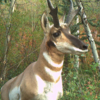





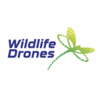

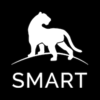






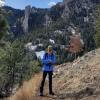
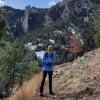








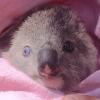



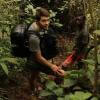


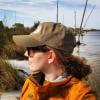






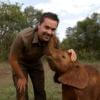



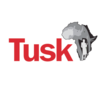

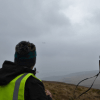


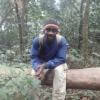

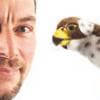
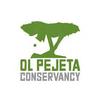
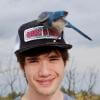
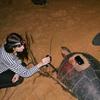
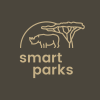


18 April 2019 3:51pm
Hi Jackson,
Attached a few images showing how we attach the koala drop-off to collar material. The first shows the bare nichrome-acrylic plate with the nylon line in-situ. There's also a picture of an actual koala drop-off with the line exiting the plate. Lastly, the triple overhand knots (repeated so the knots are doubled over and secure) tying the line through the collar material. Normally, we hide the nylon by splicing the collar material in half, tying the knots, and then gluing the collar material back together so no nylon is exposed.
Does all that make sense? Any questions just let me know.
Cheers,
Rob